The roofing is a crucial aspect of any construction project, adding both aesthetic value and shelter. Well, it doesn’t end there; aside from the beauty that emanates, the roof also plays another important role. This is protecting the furniture and individuals in the house from harsh weather conditions.
There are different types of roofing materials you can decide to choose from for your home. These materials include shingles, metal, wood shakes, clay tile, etc. Each of them has its own aesthetic value, longevity, and, most importantly, cost.
This article discusses roofing construction, the roles it plays, the various types, and their features. Read on for more information.
What is a roof?
To put it in simple terms, the roof is the upper structure of a building. It serves as protection from rain, snow, sunlight, wind, and other extreme temperatures. The shape of the roof is mostly designed according to the climatic condition of the location of the house. For example, a location where rain and snowfall a lot will likely carry a sloping roof. While in places where it rains less, flat roofs are often the norm.
How is a roof built?
Once the style, design, and materials to be used have been determined, the next step is to build the roof for the building. This is usually divided into 4 major steps; framing, sheathing, underlayment installation, and roof cover installation.
- Framing: Construction and installation of the roof frame, which is usually done with premade trusses.
- Sheathing: This is a layer of material that usually goes on top of the frame, providing the surface of the roof
- Underlayment installation: This is a protective layer covering the sheathing.
- Roof cover installation: This layer covers the underlayment while also protecting the roof from the elements.
Types of roofing materials
The type of roofing material you choose is a very important decision. It will automatically determine the durability and cost of installation. There are various types of roofing materials available today, they include:
1. Shingles (Asphalt, Fiberglass, Composite)

Shingles are a classic roofing material that you might have come across in most modern homes. It can be made of asphalt, fiberglass, or mineral composite, creating a variety of colors. Shingle roofing is used mostly for commercial buildings.
Pros
- Affordable
- Easy to repair or replace in case of any damages along the way
- Comes in a variety of color
- Is very versatile
- Recyclable
Cons
- Color eventually fades due to sun exposure
- The lifespan isn’t as long as one would hope (typically last 20 – 30 years)
2. Solar Tiles
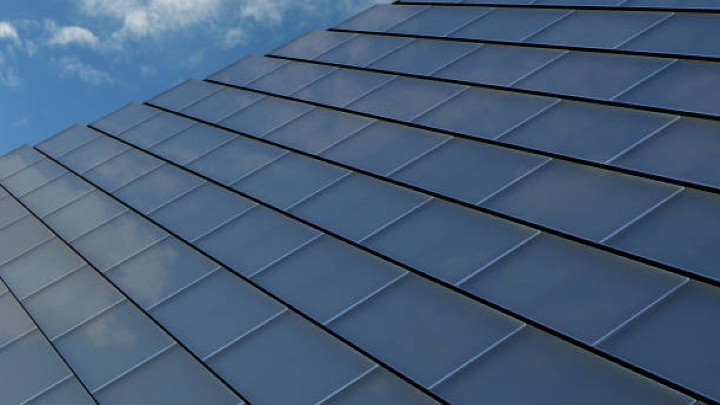
Solar roofing is a modern development that is praised also for its aesthetic value. The good thing about solar roofing is that it absorbs energy and converts it into power. This would work wonders as it will help cut down the electricity bill drastically. Solar tiles are generally preferred for corporate buildings seeking certifications related to sustainability.
Pros
- Solar roofing is a type of renewable energy in the home
- Positively affects the value of your home
Cons
- Very expensive
- Requires a specialized solar roofer to install
- Not as durable as other types of roofing materials
- Not ideal for homes situated in shaded areas as they need direct sunlight to be very effective
3. Metal Roofing
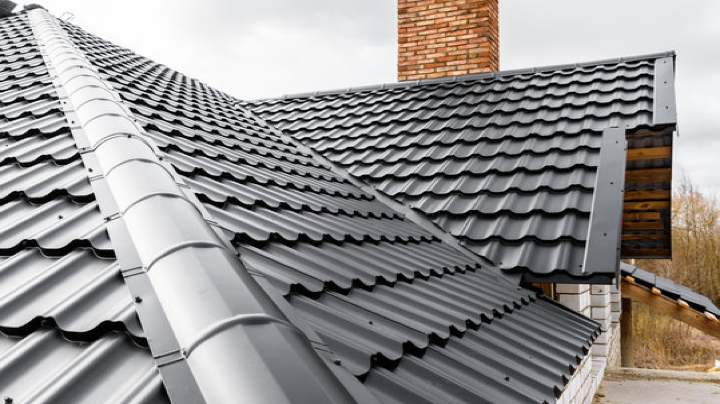
You may think metal roofing is somewhat modern, but they have actually been in use since the 1800s. Metal roofing has been a popular choice for roofing because the materials (aluminum and zinc) are affordable and remain beautiful even as they age. Metal roofing works well on large industrial or commercial structures.
Pros
- Little maintenance needed
- Very affordable
- Durable
- Lightweight
- Variety of colors
- Recyclable
Cons
- Can be very noisy, so you will have to pay extra for soundproofing, in order to reduce the sound
- Although they can withstand fire and water damage, their look will eventually suffer
4. Slate roofing
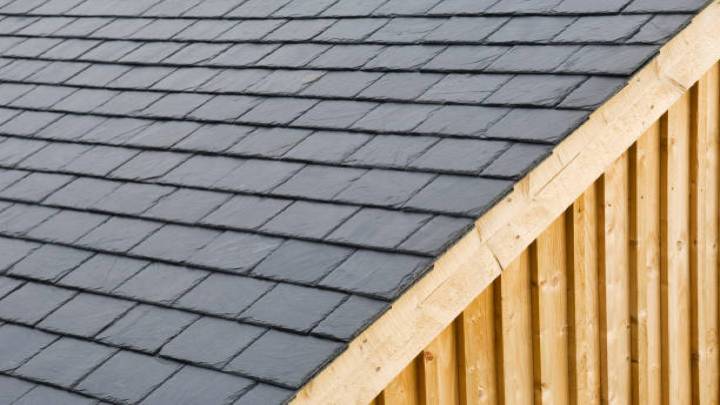
There is no denying the popularity of slate roofing. Perhaps it is because of the durability (between 50 – 100 years depending on the maintenance level), aesthetics, or its ability to resist fire, wind, and extreme temperature. Because of the numerous benefits it offers, slate roofing is usually used for commercial buildings.
Pros
- Long lifespan
- Little maintenance needed
- Very durable
- Variety of colors
Cons
- Can be very expensive
- Very heavy, which means the building would require extra support, which may incur more cost
- Very difficult to repair if damaged
5. Clay tiles
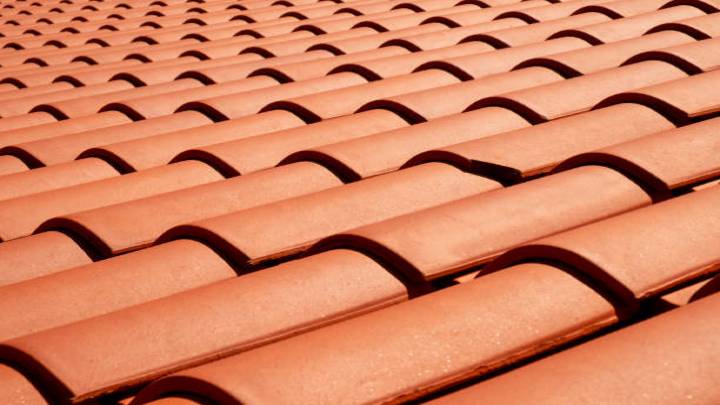
Made from earthen clay, molded and then fired, clay tile is valued for its incredible durability. You can also choose from a number of styles like Spanish, French, Scania, and more. Just like slate roofing, clay roofing is mostly used for commercial building construction because of the numerous benefits it offers.
Pros
- Very beautiful
- Little maintenance required
- Comes in a variety of colors
- Help regulate the home’s temperature
- Made from natural materials
Cons
- Vulnerable to impact from heavy objects
- Very heavy and will need more structural support
- Very expensive
6. Wood roofing
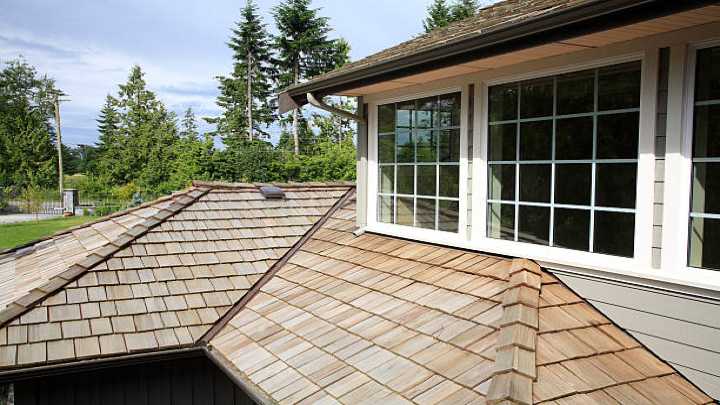
Wood roofing is one of the most appealing types of roof material around today. It is not only beautiful to the eyes but also tends to be a very durable building material. Wood roofing offers a timeless appeal and generally pairs well with modern architectural structures.
Pros
- Very beautiful to the eyes
- Provides good energy efficiency
Cons
- Wood roofing can be very pricey
- Requires regular maintenance (added cost)
- Becomes ineffective when damaged
- Susceptible to water damage, mold, and rot
- Has to be treated with fire retardants and chemical preservatives
7. Wood shakes roofing
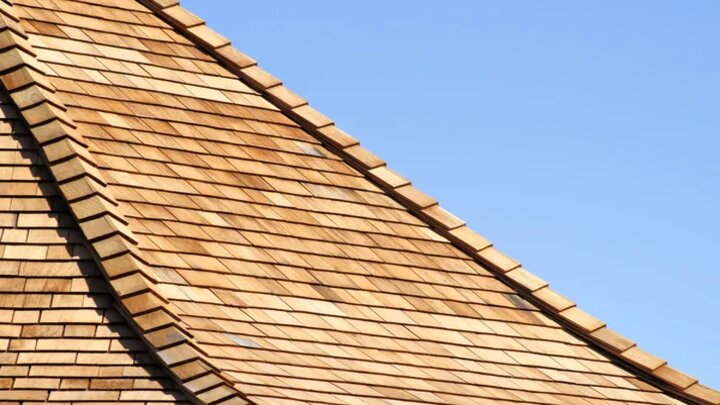
There actually might be no other roofing material that is as timeless as wood shakes roofing. They have been used in construction for millennium but has fallen short as other types of roofing materials have been created. Basically, you can use wood shakes roofing on any type of roof, so long as the rules and regulations in that area allow them.
Pros
- Natural aesthetics
- Relatively low cost
Cons
- Shorter lifespan (15 – 30 years)
- Vulnerable to mold, pests, fire
- Fades eventually
- Susceptible to leaks
FAQs
What are the most common types of roofing?
The most common type of roofing is asphalt shingles.
What is the cheapest type of roofing material to use for your home?
Talking price, asphalt shingles are considered one of the most economical roofing available.
What is the strongest type of roof?
Slate roofing is considered one of the most durable types available.
Roofing in construction – Choosing the best type for your home
Roofs are made to be strong and from the best materials possible so as to ensure they play their role effectively. It is also essential that the roof is water and moisture-resistant, otherwise the entire structure will be damaged. The roof, if also properly insulated, increases the house’s energy efficiency. That means you spend less on heating and electricity. This is why it is best to entrust your roof construction with a professional.
Many homeowners in the United States go for asphalt shingles because they are affordable and versatile. However, choosing the right type of roof for your home requires you to weigh not only the appearance and budget but also its durability with the climatic condition of that area.
Still confused? Samkins Construction Lnc is the one for you! We have both the experience and expertise to build you a solid, safe, and durable roof. Contact us today!!!
Thanks for reading.
4 thoughts on “Roofing In Construction – Why It Is Important, Types, Pros, & Cons”
Comments are closed.